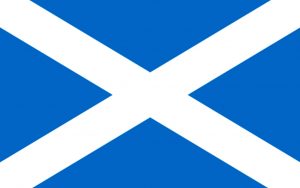
 The Translation People’s Gaelic translation services are respected for quality, tight turnarounds and our experience with a variety of technical media. The Translation People specialise in both Gaelic to English and English to Gaelic translation.
The Translation People’s Gaelic translation services are respected for quality, tight turnarounds and our experience with a variety of technical media. The Translation People specialise in both Gaelic to English and English to Gaelic translation.
Our English/Gaelic translation expertise includes, but is not limited to; product catalogues, user and maintenance manuals, quality procedures, technical specifications and websites & press releases.
If you have a Gaelic translation project, request a quote or contact us now.
Gaelic translation
The Gaelic, or Goidelic, languages have historically been spoken in communities stretching from northern Scotland to southern Ireland and are an important part of the heritage of people living in these areas. Over the centuries, the number of Scottish Gaelic and Irish Gaelic speakers has dwindled, but efforts have been made in recent years to resurrect and preserve these languages for future generations.
Pressure is being put on government agencies in Ireland to provide publications in both English and Gaelic, which has led to increased demand for Gaelic translations. In fact the Irish government estimates that translation of some 5000 pages is required annually to meet EU requirements, which is 80% higher than the anticipated volume. In addition, the EU acquis communautaire (totalling 100,000 pages) has yet to be translated, which means that there is little reference material to aid translators and furthermore, an official grammar has not been published for many years.
The Translation People are able to meet the growing demand for English to Gaelic translations by working with a global network of translation experts providing high quality translations in a wide range of fields.
Gaelic language – Did you know?
Despite having fewer than 400,000 fluent speakers, Irish Gaelic is recognised as one of the official languages of the EU as well as being the national language of Ireland and a minority language in Northern Ireland. Approximately half of Ireland’s population consider themselves to have a working knowledge of the language, something that is a requirement for many civil positions. Since 2003, Irish citizens have had the right to deal with government authorities in Irish and in December 2006, the Irish government launched a detailed plan to help the country become fully bilingual within twenty years.
Irish Gaelic shares its roots in Old Irish with Scottish Gaelic, which is also part of the Indo-European family. It is thought that Gaelic was first spoken in Scotland during the Roman period, but there is earlier evidence of its usage during the 4th century, when provinces in Northern Ireland and Western Scotland were closely linked. Since the 13th century usage of Scottish Gaelic has been in decline, but is still recognised as an important part of Scottish heritage. Today, less than 60,000 people speak Gaelic. The language’s supporters hope that it will eventually be given status as an official language of Scotland and are working towards the twin goals of preservation and education.
Why use us for Gaelic translation?
- Our use of translation memory software can reduce lead times and costs of your English to Gaelic translation.
- Translations can be provided in any format including the Microsoft Office suite, Quark XPress, Adobe PDF, Adobe Illustrator, Adobe FrameMaker,
PageMaker and InterLeaf. - Our English to Gaelic translators are professionally qualified linguists and translate exclusively into their native language.
English to Irish Gaelic translation
| English | Irish Gaeli |
| Good Morning | Dia dhuit |
| Good Night | Oíche mhaith |
| Thank you | Go raimh maith agat |
English to Scottish Gaelic Translation
| English | Scottish Gaelic |
| Good Morning | Madainn mhath |
| Good Night | Oidhche mhath |
| Thank you | Tapadh leat |
